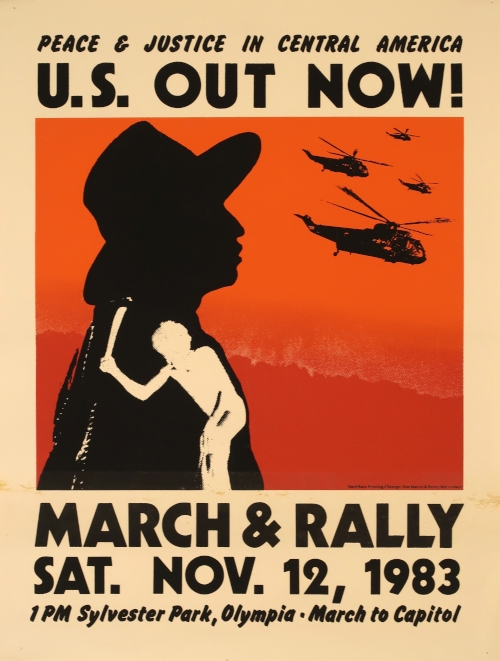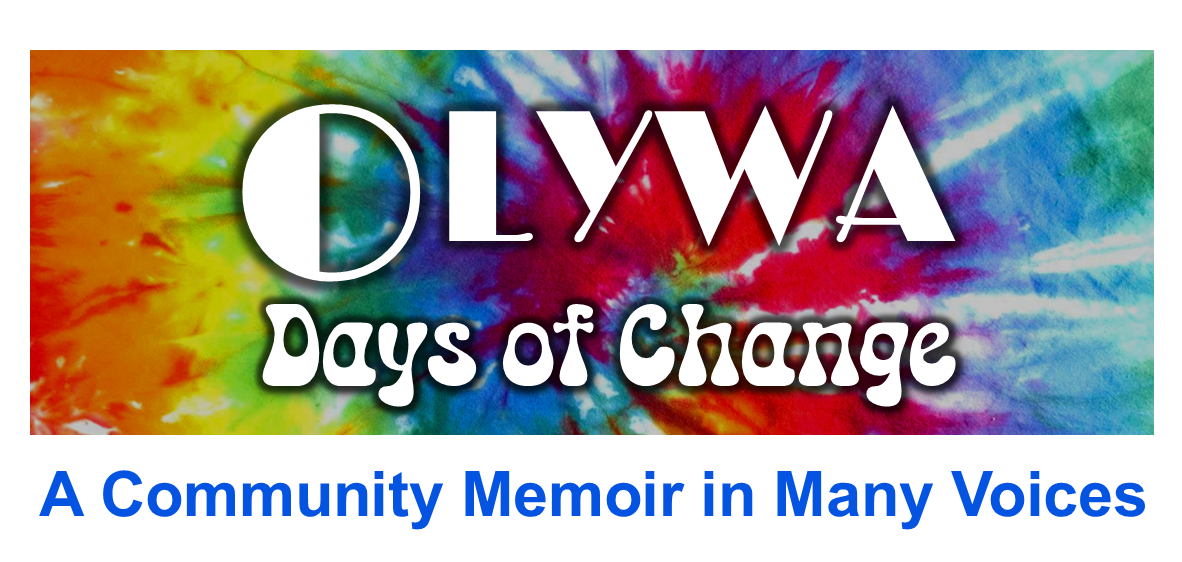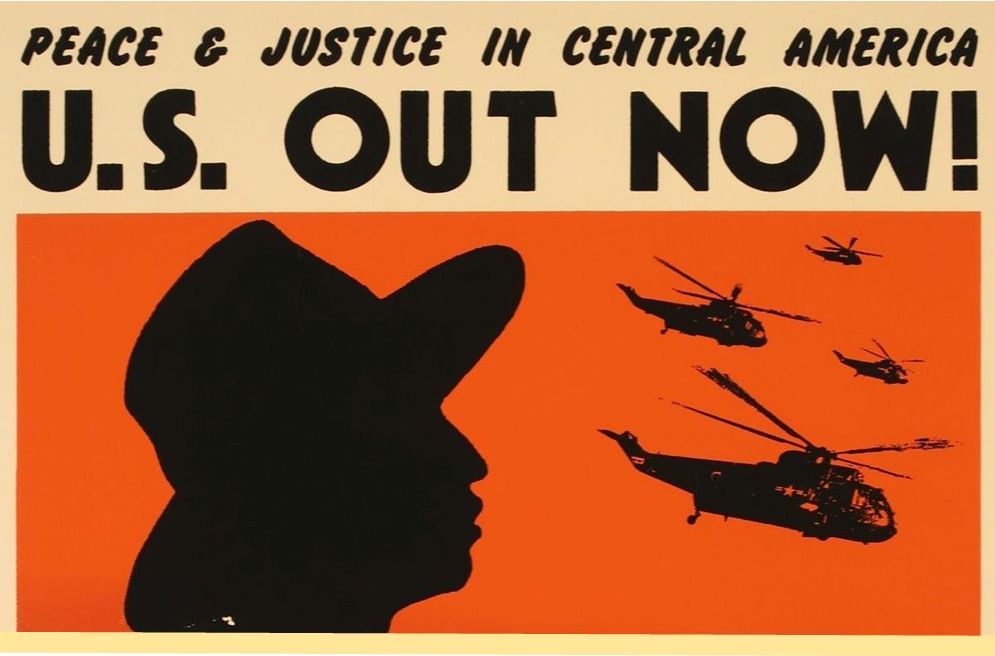ACTIVISM
Oly Activism in the 1980s
By Ron Jacobs
I moved to Shelton on the Olympic Peninsula in January 1985 from Berkeley, California. Needless to say, it was a bit of a culture shock. The woods where I lived in a single-wide with my 11-month-old son Ian, his mother, and a friend were a welcome change from the concrete and cops of the Bay Area. That first year on the peninsula is a bit of a blur. Working in a sweatshop-like workplace that built motherboards for the infant Microsoft Corporation earning three bucks an hour, parenting a child, and being part of a marijuana grow operation when such things were quite illegal. Still, it was all good.
We went into Olympia a couple times a month. I couldn’t help but notice the posters for musical, political, and literary events at places like the Asterisk, the 4th Avenue Tavern, and, of course, out at The Evergreen State College. Whenever I was in Olympia, I picked up a copy of the South Sound Alliance newspaper and whatever political propaganda I could find. Of course, I also stopped at Rainy Day Records to check out the new CDs. Living in Shelton with its Christian pastors and a particular version of politics I found unique to western Washington required me to tread carefully when certain topics were raised. Most people I met at work and in the taverns understood that the corporations were screwing them. The Simpson mill in town was operating at about half of what it had been before Ronald Reagan. His loosening of the financial regulations and the rampant clearcutting of the past decade had put a lot of mill workers and a few loggers out of business. In fact, most of my co-workers were the partners of laid-off workers who were collecting unemployment until it ran out.
My other job was helping out a couple friends who were growing marijuana indoors. It was illegal back then. My main job was watering the plants and keeping them pest free. I learned a lot about horticulture.

I was able to spend more time in Olympia when Ian’s mom moved into Olympia in fall of 1986 to be closer to Evergreen. She started attending the school in the fall of 1985, but the rent was so cheap at the place I found in Shelton it wasn’t worth her moving then. Eventually, we rented a place on Division Street a few blocks from the Asterisk. I began attending more events and even some Central American Action Committee (CAAC) meetings. I was still working in Shelton while I got my transcripts and funds together to begin Evergreen. I was conditionally accepted to the college for fall semester 1987. On my first day of classes, I stopped by the Evergreen Political Information Center (EPIC) and introduced myself. The folks working there graciously accepted my offer of assistance. They were putting together publicity for an action against a congressional attempt to fund the Contras fighting the Sandinista government in Nicaragua. I remember meeting some folks from Seattle who were gathering signatures for the Pledge of Resistance—a nationwide pledge by signers to gather and commit civil disobedience at federal buildings and other installations should the Reagan regime escalate the wars in Central America.
In 1987, I began to regularly attend CAAC meetings. At the same time, the national organization called Committee in Solidarity with the People of El Salvador (CISPES) opened a chapter at TESC. I had been involved with CISPES in Berkeley, so I was quite happy they had established a presence in Olympia. I began attending those meetings too. We organized a number of speakers to come talk at TESC and elsewhere in Olympia about the situation in Central America. This involved fundraising, organizing appearances, interviews, and dinners for the community.
The biggest protest I recall being involved in with CAAC and CISPES was in fall 1989, during an uptick in the war in El Salvador and after the Salvadoran military had killed six people at a Jesuit home there. Both priests and their housekeepers were brutally murdered. This news intensified the nature of the protest and increased our numbers in front of the federal building on Capitol Way. The original intent of some of the protesters was to occupy an office inside the building. Indeed, an Evergreen student and I “cased” the building a couple days beforehand, looking for appropriate offices and possible entrance points. As it turned out, the building was locked down the day of the protest and we could not get inside.
Instead, a couple hundred protesters sat down on the steps of the building and refused to leave after being read the riot act by the various police forces aligned against us. After a standoff of an hour or so, empty buses from the county jailhouse pulled up in front of the building and the cops blocked off the street, diverting traffic away from the location. We were ordered to disperse once more and then, after those of us not ready to be arrested moved off the steps, the police began arresting people. They loaded them onto the buses and took them away for booking. Most were released with a citation and a court date. One man who ran as the police tried to handcuff him, took a bit longer to get out of jail. Attorney John Thorne helped us on that release. He also helped some of the defendants in court.
A few weeks later, the US invaded Panama. Less than a dozen folks showed up to protest. There were those in CAAC who fell for the US government’s lies about Panamanian ruler Manuel Noriega and considered the invasion a legitimate action. They ignored the arrogant imperialism of the act in favor of the popular perception of Noriega as a drug trafficker. This was in spite of their knowledge of proven drug trafficking involvement by the man who ordered the invasion—George H.W. Bush. His ability to escape the Iran-Contra investigations—which proved drug and arms trafficking by a cabal of high ranking US government officials—without any charges did not equate to Bush’s innocence, just to the fact of his power and CIA connections.
The low turnout and the political confusion would be an indication of what lay ahead when we would organize against the next US imperial war. That would be the one known among some as Desert Storm. We began organizing against that slaughter in August 1990 as Bush began sending thousands of US military forces into the region. The peace movement hesitated at endorsing our actions at first. Then, as it became apparent that another big war was on the horizon, we joined together and organized some of the biggest antiwar protests Olympia had ever seen.
We encourage readers to contact us with comments and corrections. Disclaimer

